A female cat makes special noises during heat, purrs and huddles on the floor. When she is situated towards her mate, she assumes a special pose, arching her back and pulling her tail away. The male holds her by the withers with his teeth and covers her. The intercourse continues for a few seconds. If this is the first mating for you, it will be important to know in advance how the cat behaves after the mating. She pushes the cat away, emits distinctive piercing screams, starts licking herself violently and demonstrates her reluctance to continue intercourse. In some cases, she may be aggressive, attacking. In others, she simply retreats. At times, owners wonder why the cat tumbles after mating. There is no exact answer, perhaps the male bit her scruff too hard.
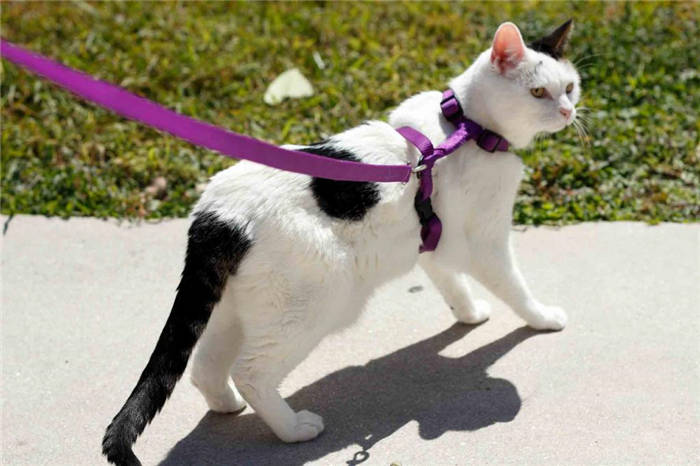
- How a cat behaves after mating
- How to know if a cat and a cat have mated
- How does the cat behave during the first sexual experience
- Cat behavior during heat
- How to prepare for the first mating
- How to draw up a mating contract
- Inebriation: signs of a cat's readiness for mating
- Rules of mating
- Causes for concern
- Specific Behavioral Characteristics
- How to determine the readiness of animals
- Preparing for mating
- Getting to know the animals
- Place of mating
- What do you need to take with you?
- Help from owners
- Basic requirements for the continuation of offspring in cats
- Cat behavior during heat
How a cat behaves after mating
Owners of cats and cats who decide to mate their pets and have offspring have a lot of questions. One of them is how a cat should behave after mating, and by what signs you can determine whether the mating has been successful or not.
The behavior of an animal depends on many factors, but it should not be forgotten that each pet has its own character and temperament, affecting any manifestations of sexual behavior. Nevertheless, there are general standards that owners can be guided by.
How to know if a cat and a cat have mated
Important: To obtain offspring, it is recommended to put the cat and cat in the same territory for 2-3 days.
Direct mating to the pair is preceded by a flirting period. How long it will last depends on the experience of the cat and the cat's temperament. Attracting a partner, cats usually show aggression when they approach him directly.
The process itself happens rather quickly. The duration of direct contact can vary from a few seconds to 1 minute. Even if the owners are around, they may not always realize that things have already happened. Beginning breeders often have the question of how to tell if a cat and a cat have already mated.
Experienced cat owners recommend focusing on these signs:
As a rule one setting is not enough for the guaranteed conception, and in order not to ask the question how to understand if the cat has mated with the cat and there will be a result, the animals are left together for a longer period, giving the cat an opportunity to make several sets.
Also it's necessary to take into consideration that there is no uniform advice how to understand if the cats have mated, and if the owners haven't seen the process, it will be difficult to tell by the simple behavior of the animals that the intimacy has happened and there will be a pregnancy.
How does the cat behave during the first sexual experience
Whereas cats mature for reproduction at the age of 8 months and their sexual maturity is pronounced, this is a little different with cats. They mature by 9 months of age and, unlike cats, do not show aggression, but, on the contrary, become excessively affectionate to their owners.
A cat that begins to walk differs strikingly in its manners – it will walk around the male in circles, caressing him, and its postures will be quite peculiar. A cat may mark its territory in the house with urine.
Sexual activity in the feline world is different and depends on the breed. House cats have a shorter period of sexual activity than domestic cats. It also depends on the time of year. It lasts no more than 5 days in winter and several weeks in summer.
At the first intercourse the cat will behave passively. Some females may not let the cat near at all for the first time, showing increased aggression. This is primarily the behavior of the Sphynx and Scottish breed cats. The possibility of procreation remains in females up to 8 years old.
Cat behavior during heat
Unlike in dogs, which are signaled by a bloody vaginal discharge, cats have no such symptom. But a cat's behavior changes so dramatically and becomes specific that the owner can easily determine that the pet has entered an active sexual phase:
- Becomes more affectionate, follows the owner's heels. If the owner – a man, begs his attention and tenderness.
- Spends most of the time in motion, rubbing against furniture and legs of the owner.
- They assume peculiar posture: they raise their tail and lean on their hind legs, while lifting their pelvis up as much as possible. In this pose may move around the room, turning backward.
- Or she stops to eat anything at all, or her appetite is significantly reduced.
- He will ask to go to the litter box more often, as urge to urinate becomes more frequent.
- She meows more and more often, and gradually her usual meow changes to a very unpleasant, shrieking sound, which is very hard for her owners to bear.
Her heat lasts for 5 to 6 days and is repeated every 15 to 20 days. The presence of the above signs is a standard part of the heat, but it also happens that the stage of sexual activity takes place without any expressed signs, it's the so-called hidden heat. The owners will be only happy to see their cat's lack of overt sexual activity, but for breeders this peculiarity of the female may be a real problem.
How to prepare for the first mating
To mate a pedigree cat with a cat for the first time, proceed as follows:
Step 1. Choose a mating partner. You can look for a mate for a cat or cat at cat shows or through the club that registered the animal at birth. However, the final word rests with the Club's breeding committee. If the potential partners do not match each other by blood type or are closely related, it will not be possible to get permission to mate.For the first mating to be successful, the chosen partner must be an experienced one.
Step 2: Stop taking hormone medications. If using drugs that suppress heat, stop taking them 2-3 months before the intended mating. During this time the hormones will be restored, and the cat will become fertile again. But further taking pills to suppress sexual activity is not safe. If you plan to breed a cat in the future, give them up completely. If you want to stop at one mating – think about spaying or neutering afterwards. Please note: it is not desirable to untie a cat just to suppress her restless behavior during heat. If you do not plan to breed in the future, it is better to neuter or spay the animal: a cat – before the first heat at 3-6 months, a cat – at 1 year.
Step 3: Look in vet passport. If the annual vaccination period is about to expire, get vaccinated at least one month before mating.
Step 4: Get tested. Test the cat for genetic, viral and sexually transmitted diseases. For example, chlamydia mycoplasmosis, VIC, VLC and feline coronavirus. The test results should not be more than 3-4 weeks old on the approximate date of mating.
Step 5: Treat the cat against parasites. Treat your cat against fleas, ticks and worms at least 2 weeks before mating.
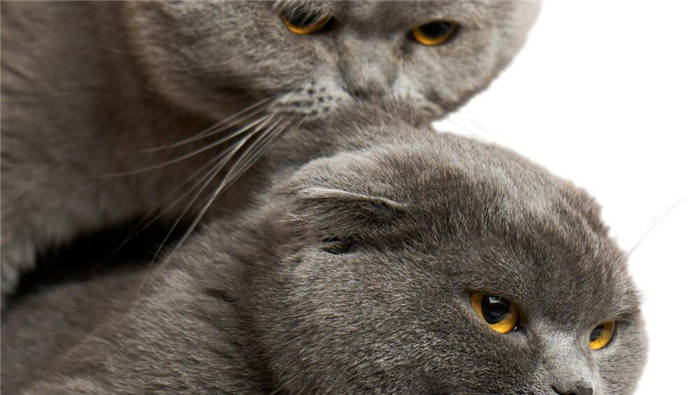
How to draw up a mating contract
If the cat and cat are registered in different clubs, you have to write the conditions of mating on paper: you can request a standard contract from your club and make any changes at your discretion.
Cost and type of payment. The cost of mating is determined by the titularity of the breeder. The more regalia a cat has, the more expensive it is to mate with him. Sometimes cat owners ask for a deposit – that's normal. But if the cat doesn't get pregnant, with its medical certificates in order, the money should be returned. As the equivalent of a cash reward, cat owners have the right to offer an alimentary kitten. This is usually the best representative of the litter. However, the cost of a kitten – especially from "star" parents – is always higher than the cost of the mating itself. Therefore, a surcharge may be asked for it.
The right to have the litter examined. The cat owner has the right to know the number of kittens in a litter and to assess their appearance and health in person. Especially if the cat owner is paying for the litter with a kitten rather than money.
Liability for bodily injury. If a cat or cat injures each other, their owners must agree on whether someone will be responsible for it.
Conditions of mating. If you want special conditions, negotiate them beforehand. For example, what to do if the cat doesn't let you do a litter box. In some cases the animals are tied up by force – they hold the cat in a static position so the cat can get to it, in other cases they leave everything to nature. If the cat can't handle it, they look for another partner.
Extras. Sometimes cat owners guarantee the exact number of mating sessions and promise to send the cat owners photo and video materials, which confirm the success of the meeting. To reflect these services in the contract or not is a mutual decision of the parties. In practice, it is impossible to guarantee the success of the mating, and the cat's owners risk not fulfilling their obligations.
Inebriation: signs of a cat's readiness for mating
Based on the peculiarities of feline physiology, cats do not already have bloody discharge at the onset of sexual desire. But before that, heat can be noticed. Depending on climatic conditions, the psychology of the animal, and interaction with congeners, the intervals between heats can range from two weeks to several months (3-6 months at most).
The heat takes 5-10 days. During the first days, the animal becomes affectionate and often rubs its legs. Although there may be the opposite reaction, the cat becomes aggressive, somewhat agitated. External manifestations are slightly swollen genitals, curvature in the lumbar region, ducking of forelegs and raised tail.
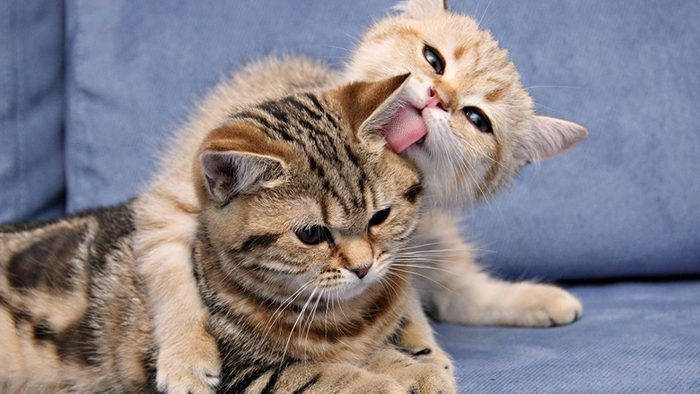
In 2-5 days from the beginning of heat, the cat is ready for mating. During these days she shows her desire and calls the cat, and takes a "comfortable" position when being petted – she drops her forelegs, lifts her croup and moves her tail aside. This is an indicator that the animal is ready for "marriage".
At this time the cat may refuse to eat, but the number of trips to the toilet increases.
Cats can not only make unpleasant sounds for the human ear during desire, but also to "mark" the territory, to use for "playtime" various things.
Rules of mating
Those wishing to breed animals or simply to make easy money on pedigree kittens should understand that the process of mating a cat and a cat is far from simple. Proper mating requires sufficient knowledge and skills in genetics, zoology, as well as legal intricacies to process offspring or possible problems with pregnancy and childbirth.
There are basic mistakes that unprofessional breeders can make:
- Choosing the right partner. It is better to choose a breeding partner in advance, or better several possible partners, as one cat may not like the cat. Then all the efforts will come to naught, and time will be lost. All conditions and nuances are discussed with the owners of potential partners. For breeding it is better to go to a professional club and not to pick up from ads. Because there may be some accidental mishaps with some contamination of the breed. Here the main indicators are the following:
- absence of close relatives at least to the third tribe;
- Evaluation of the appearance should be carried out, in addition to health, by color. It is important to understand what coat color the kittens should expect. A knowledge of feline genetics is helpful here;
- It is important to find a partner with an appropriate blood type. Cats have only three: A, B and A/B. Cats of blood type A and B should not be mated. This leads to the possibility of the birth of unhealthy offspring.
- Some breeds of cats are incompatible with each other, but breeders often experiment.
- Care before mating. The main thing is the health of the animal. It is necessary to organize the proper nutrition and maintenance of both the cat and the cat. Vaccinations against various infections (rabies, feline distemper, rhinotracheitis, calciviroz), fungal and "venereal" diseases (chlamydia, shingles), de-worming (getting rid of worms) are mandatory. Vaccinations are done once a year and deworming once every three months. The last one should be done 10 days before the planned day of mating. After that, no medical measures are recommended.
- Cat and cat diet. Overfed or underfed animal is alarming if you want to have kittens, possible complications during pregnancy and childbirth. With advance preparation, vitamins should be added to the usual diet.
- Content of the animal. It is necessary to ensure peace, absence of drafts and temperature changes.
Causes for concern
Let's dwell a little more on this point, since the issue is related to the life and health of your pet. If after mating the animal behaves as if he is sick, up to and including vomiting, diarrhea, fever, there are several reasons for this:
- Stress reaction. The presence of the male, moving.
- Digestive disorders due to eating habits, if the animal was given to mate in another home.
- The possibility of a toxic infection is not excluded. It has nothing to do with the mating.
- Before mating, check whether the male has been vaccinated against the most dangerous diseases. There are a number of bacterial or viral infections that can be sexually transmitted.
If the cat does not eat for more than two days after mating, then the cause is more serious than it first appears. It is especially important to see the vet as soon as possible if the cat refuses water.
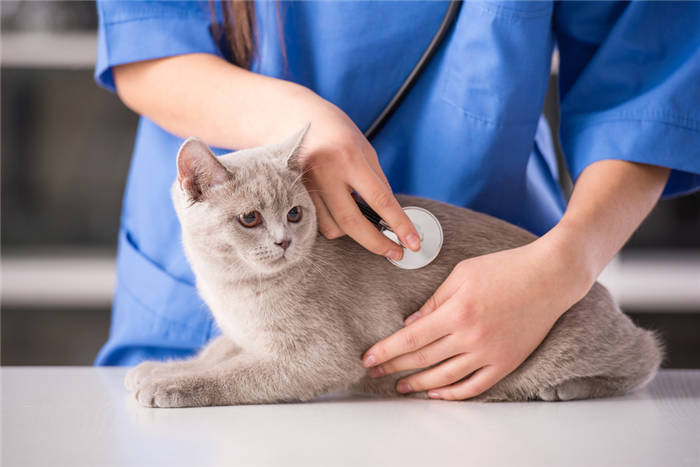
Specific Behavioral Characteristics
There is no exact framework here. For one thing, a pet's behavior depends on its individual characteristics. Some will meow restlessly while others will sleep serenely. But sometimes a cat's behavior after mating is just surprising. She keeps asking for a cat and behaves very restlessly. It depends on which day of the heat the mating took place. That is, the same animal will show different behavior depending on when the mating occurred. The reason is simple – the hormonal background, which changes throughout the heat.
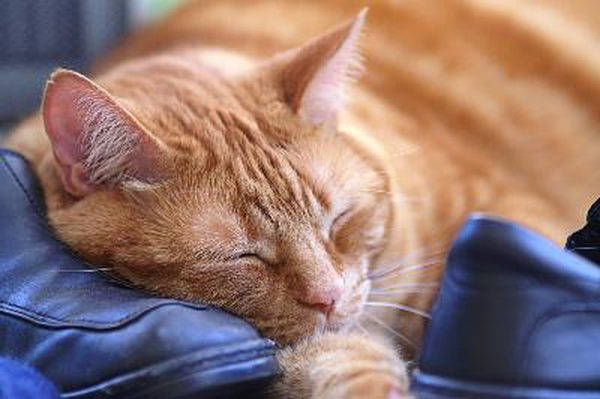
How to determine the readiness of animals
The peak of sexual activity in cats is known to be at the beginning of spring. This period is the best time for cats to mate. However, even at other times of the year, males can cover the fluffy ladies quite successfully. In kittens, mating can occur, of course, only during the heat period. Such periods in very young furry ladies usually occur every month. For fertile cats, heat occurs with a frequency of once every three months.
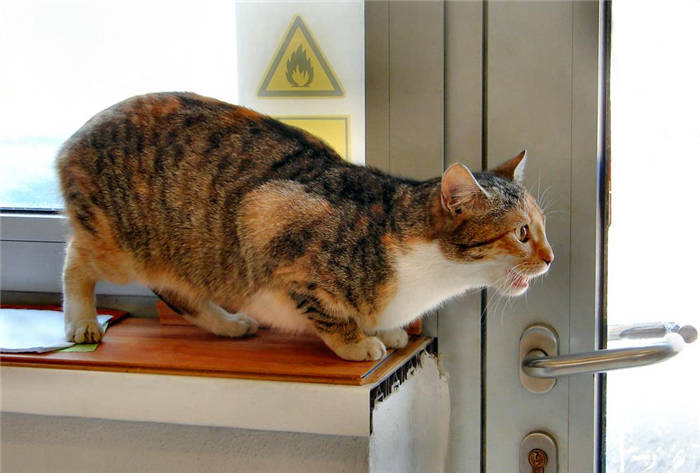
The hunt in females usually lasts for 5-10 days. You can tell when a cat is ready to mate by the following signs:
Also during heat, cats may have a decreased appetite. The cat's gait also changes during this period. The cat may periodically put its tail to the side and raise the back of its body up, producing a characteristic purr.
Preparing for mating
Mating is a very responsible procedure for purebred animals. It is necessary to prepare both the cat and the cat for mating. The claws of the animals must first be trimmed. Otherwise, partners can hurt each other during mating.
Of course, the animals must be vaccinated and dewormed. Also before mating, both the gentleman and his lady should clean their eyes and ears. The coat of the animals must not be dirty, of course. Of course, the possibility of pets having fleas is also completely excluded.
Dehelminthization of cats is usually carried out 2 weeks before the mating. Partners should be examined for infectious diseases at least 3 months before mating. Cats are allowed to have their last vaccination 14 days before mating.
Sometimes it happens that partners simply do not like each other. In this case, the mating may not take place. Therefore, the owners of the cat should definitely find an alternative for her in advance.
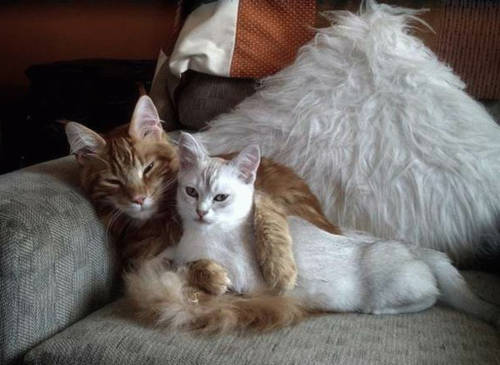
Getting to know the animals
To make it go as smoothly as possible, you should not wash the cat or cat with shampoo before mating. This will remove the natural smell of the animal, which affects their sexuality to the opposite sex. Also, a huge responsibility before the success of the mating is the owners of the cats. The male has to be more prepared than the cat. Therefore, before mating a cat with a cat for the first time, it is necessary to find an unmated cat. If both animals mate with each other for the first time, it may serve to traumatize them psychologically.
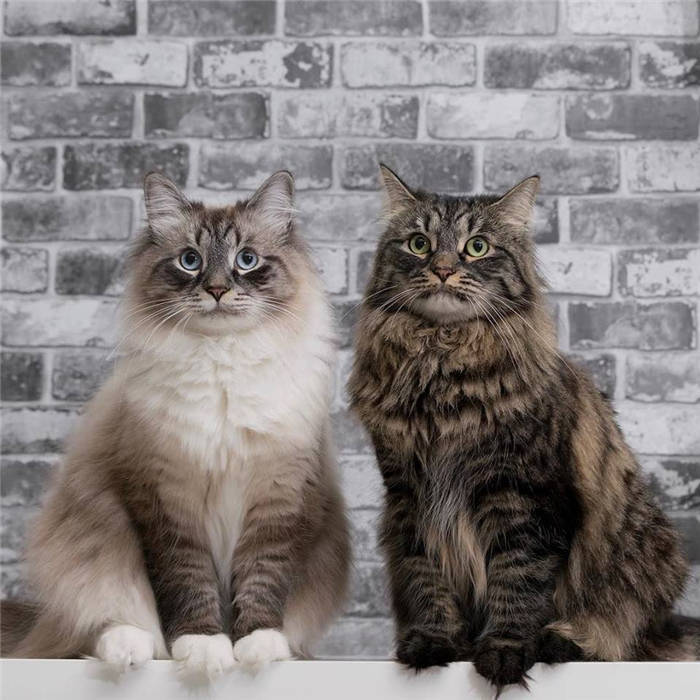
Place of mating
Mating a cat with a cat for the first time should only take place on the male's property. This is necessary for the cat to feel as confident as possible. Therefore, after arriving in a new environment, the cat should be given time to adapt to a foreign home. Before leaving the animals alone, you should make sure that the cat is familiar with the cat and the new smells of the surroundings. If the lady is being overly aggressive, you should isolate her in a secluded place. An aviary, a cage or a carrier will do a great job for this. There is no need to throw her out of it. When the cat is mature enough to make the acquaintance, it will come out without help. This may take an hour or two, or a whole day.
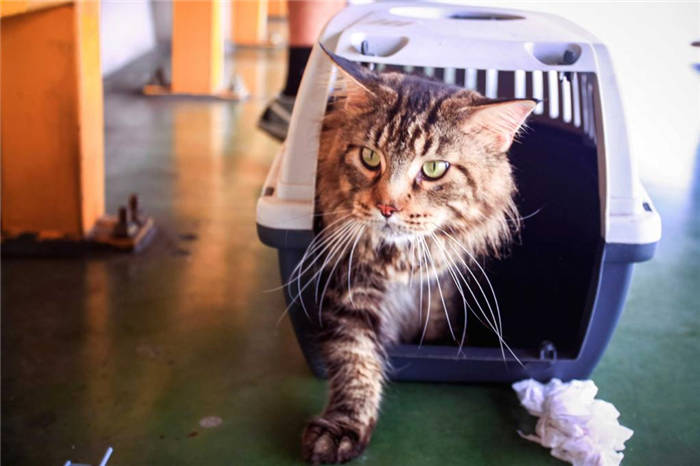
What do you need to take with you?
Just taking your pet to mate is not enough, you need to take care beforehand to make sure that the cat "wedding" goes well. Remember that the female cat will get into someone else's territory, where she should feel more or less comfortable. In order to calm her down a bit, don't forget to take her sleeping mat, as the familiar smell will have a positive effect on her nervous system. It would also be nice to take her favorite food, comb and, if possible, a litter box. You can also take her favorite toy, to which the "bride" can be distracted. As for the male, he will need a rubber mat, so that his paws do not slip when mating.
When meeting in person, the animals begin to get acquainted. Usually the male is the first to show interest and diligently "woo" the new girlfriend. He gives her all sorts of signs of attention, trying to interest her in his person. In most cases, females behave aggressively at first, but, as a rule, they quickly calm down. And this is only the very beginning of acquaintance, there is quite a long "foreplay" ahead of them, which can last up to several days.
The mating itself happens quickly, from ten seconds to three minutes, and consists in the cat arching its back and the cat cat pulls it under itself, holding it by the scruff of the neck with its teeth. Don't be frightened if your pet screams violently during this process, this is a normal reaction. After it is over, the female calms down, and some kittens tolerate the "act of love" indifferently. For fertilization, one mating is usually enough, but for better results, experts recommend leaving the cat with the cat for a few days so that the mating can be repeated.
Help from owners
Mating is a natural process, but despite this, animals need the attention of their owners. And, so you don't have to wonder why a cat won't mate with a cat, mating should be supervised. Remember that this process requires the utmost patience.
- Show care. Do not rush your favorites, do not push them to each other – you will only aggravate the situation. "Newlyweds" need to reach a certain stage by themselves.
- In any case do not raise your voice to the pets, if you see that they can not come to an agreement. It is quite possible that they simply could not "agree".
- If you see that the potential partners have already moved on to a "showdown" – you can stop the meeting. Do not expect that they will get along.
- In case of the intimacy control the situation. The female may need your help if she will fall on her side, limiting her partner's access.
- After the successful completion of the "date" carefully examine the female for wounds, because the male in a fit of passion may accidentally leave scratches on the cat.
Basic requirements for the continuation of offspring in cats
- At least 12 months old
- Good health
- All vaccinations
- A suitable mating partner should fulfill the above points
- Both cats should be tested for feline leukemia virus and Feline Immunodeficiency Virus before mating
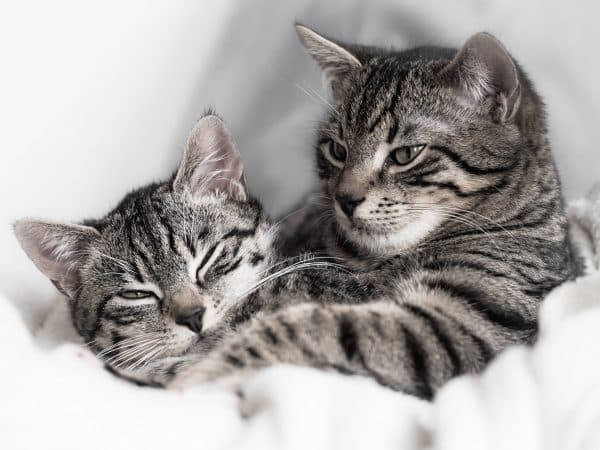
Cats become sexually mature (ready for kittens) at about six months of age. However, it can happen earlier – so it is thought that to prevent unwanted pregnancy, a cat should be spayed no later than four months of age. In nature, the spring increase in reproductive activity is probably due to an increase in day length. Pregnancy beginning in this season allows for adequate food and the most suitable weather for the kittens, who are due to be born in nine weeks.
After a female cat reaches puberty, she will have a heat – which means she is fertile and already receptive to mating. The heat will last for 5-8 days and recur every 2-3 weeks until she either becomes pregnant or is spayed.
Cats do not discriminate between kin and will mate with any available cat during her heat, whether it is her father or brother.
Cat behavior during heat
- Increased vocalization (known as calling)
- Changing behavior – rubbing, rolling around on the floor, leaving tags
- Adopts a mating pose. You can spot this by stroking her back. She immediately assumes half-lying pose on her front paws, raising her rump and moving her tail to the side.
- Loss of appetite. Common in cats during heat. Most likely she has more substantial things on her mind. At this point in time, she will do everything possible to literally run away and find a mate.
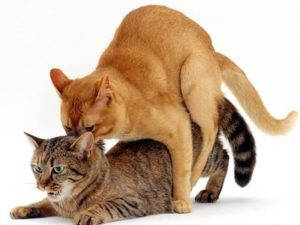
Several cats may gather around a cat ready to mate. In this case, the cat in whose territory the meeting takes place is at an advantage, as it feels more confident in the confrontation with competitors. Nevertheless, a cat may have its own preferences determining the choice of a mate. A cat will not accept any advances from cats if it is not ready to mate.
On the other hand, uncastrated cats are constantly on the lookout for cats who can accept their advances. Cats detect the scent, hear the sounds and see the body signals the cat exhibits, and understand what is going on much earlier than the cat's owners do. If the cat is within reach of the cats, mating can happen very quickly, literally in a couple of minutes.
If the cat is available and all "decency" is observed, the cat will come to her from behind, put his front paws around her, press with his hind paws (like pacing) to insert the penis and make several deep thrusts. Ejaculation occurs within 15-30 seconds and is accompanied by a low growl from the cat and a high-pitched scream from the cat. It is believed that the protrusions on the cat's penis pointing in the opposite direction from the exit hurt her, but this is necessary to stimulate ovulation. When the cat is withdrawn from the cat, she may pounce if she thinks it wasn't quick enough. Mating may be repeated later, after a few minutes or a few hours. The cat is capable of 10 to 20 mating sessions on the first day and may mate with several cats over the next four to six days.






